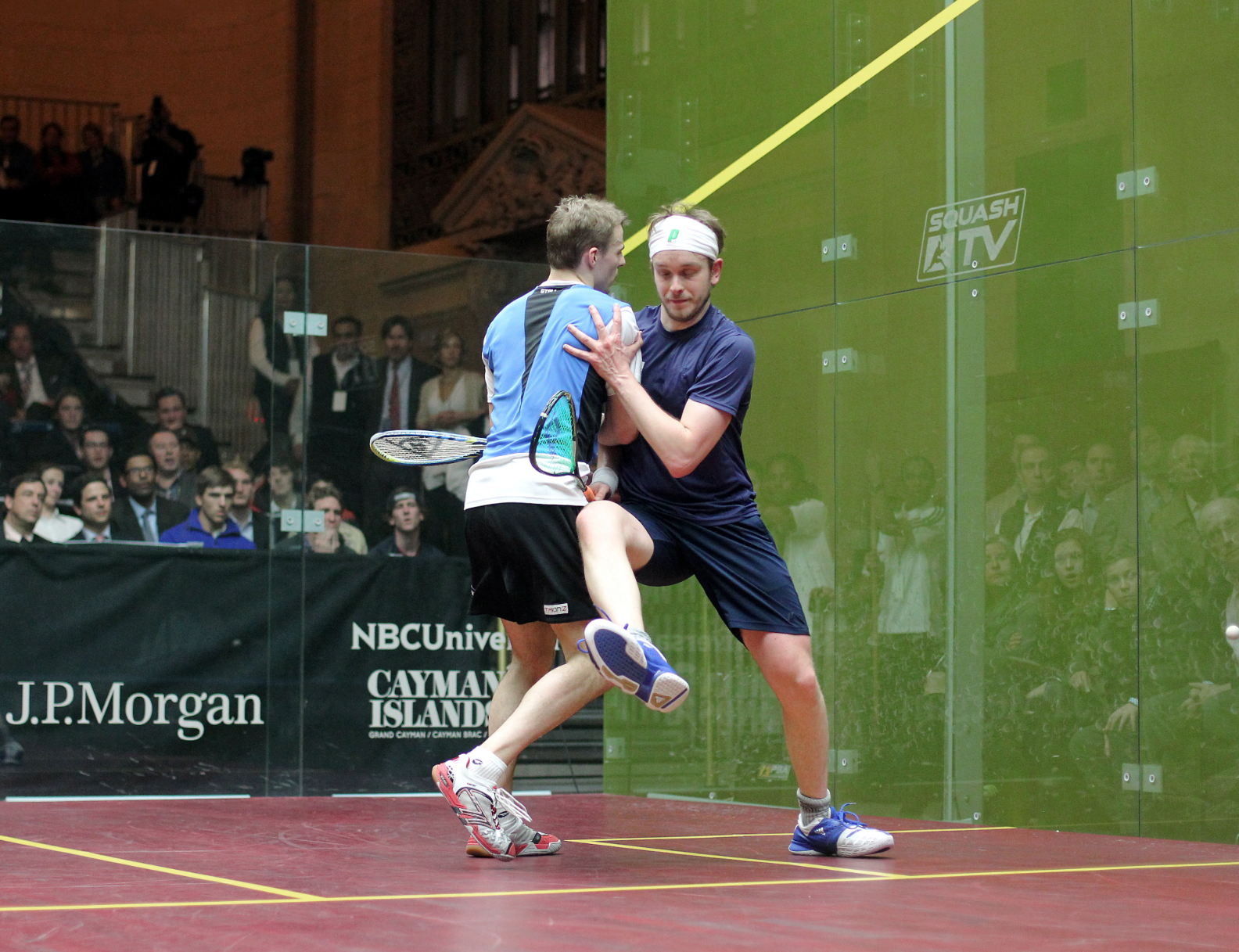By Barry Faguy, WSF Referees and Rules Committee
The rules are often very categorical, and there are enough of them that it is quite natural for folks to try to simplify them to avoid confusion. However, too much simplification can mislead you into unfair decision-making. The phrases listed below are just a selection of what some consider to be ‘truisms’—but which are, in fact, incomplete attempts at simplification. As you’ll see, these all have exceptions—demonstrating the need to consider many things to ensure fairness.
Let’s look at a few:
1) “No interference…No Let!” Sounds right, eh? However, that quick sound bite fails to consider one of the most common reasons for the award of a Let in the sport— “reasonable fear of injury.” It’s specified in several places in the rules and, without it, there’d be lots more blood on the court. We often have a situation of ‘no interference’ when a ball is several inches from an opponent’s face, but if the zero-tolerance policy found in the title here existed, players would have to swing at those or suffer a No Let. We don’t have to paint that picture any further.

2) “No effort to clear…stroke to striker!” Also quite true, but remember that what may look like no effort to clear may be a case of the escape of the outgoing striker being quickly trapped by a rapidly incoming striker. These are most often Lets. Pay close attention to all the related circumstances because this is also very common—and can mistakenly be interpreted as a failure to clear.
3) “Ball hits opponent going to front wall…stroke to striker!” Right, but there are two key exceptions: a) It’s a Let if the striker was in the process of a further attempt; b) It’s a stroke to the non-striker if the striker turned before hitting the ball. Contrary to the preceding paragraphs, such occurrences are not common.
4) “Ball hits opponent during a boast …Let!” Yes, but if you, as the referee, believe that that boast would have been a winning return, then you must award a Stroke. This applies both for actual contact, and for circumstances where the striker refrains from hitting the ball. Luckily, this is not a very common conclusion.
5) “Only the striker can ask for a Let!” This is correct, but what is often forgotten is that the provision in question refers to rule 12 (Interference) only. If we have situations dealing with something like a distraction, or a change in court conditions—then either player may ask.
6) “Broken ball…Play a Let for that rally!” Again, true, and that’s what happens in the overwhelming majority of broken-ball cases. The exception that occurs here is only with a serve. If a ball is discovered to be broken when served, and if the receiver does not attempt to return it, we can not only can replay the serve as usual, but we can replay the rally preceding the serve if the referee is uncertain whether the ball may have broken then or not.
7) “Referee uncertainty about a Marker call always results in a Let!” Sounds reasonable, but there’s an exception here too. If in your opinion as referee, you are uncertain about the correctness of a Marker’s call about a player’s return—but you are convinced that the incoming opponent’s (now) interrupted return would have been a winner—then a Stroke to that incoming player is the fair call.
8) “Not ready for service is an automatic Let!” You got that one right. However, the exception is if the serve is served out—then the ball is out and the server loses the rally. Unless there was a distraction during the act of the server hitting the ball, then nothing affected the flight of the ball and the outcome stands. The old maxim of ‘the ball has no ears’ prevails—meaning that the eventual call of ‘Out’ has in no way affected its flight.
Naturally, these are just quick reviews of some exceptions, but by referring to the rules and the guidelines, you get a more extensive explanation about them—and about others not touched on here. Remember that this isn’t rocket science; it’s much harder! However, knowing these exceptions can only contribute to greater clarity and confidence for you as you take your seat to officiate your next match.


